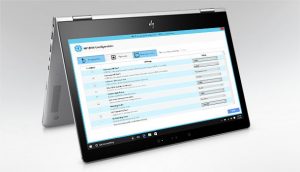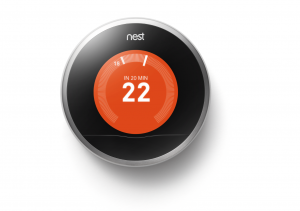Amnesty International reports on recent email phishing attacks
Article
How Hackers Bypass Gmail 2FA at Scale | Motherboard
Hacker spoofing bypasses 2FA security in Gmail, targets secure email services | ZDNet
My Comments
Recently, it has been revealed that hackers were attacking users of secure email sites by compromising the two-factor authentication that these sites implement.
This has been found to be an attack perpetrated by nation-states against journalists, human-rights defenders, non-government organisations and their allies in the Middle East and North Africa over 2017 and 2018. Here, this user base were using GMail and Yahoo Mail Webmail services and Protonmail and Tutanota secure Webmail services that were compromised. This is because the Webmail setup typically allowed for a client-independent portable email front.
What was going on was that a phishing page was asking for the users’ email and password but this would trigger the software’s two-factor authentication routine. But the user interface was “steered” via a fake page asking for the one-time password that the user would transcribe from their mobile phone which would receive this value via text messaging. It then led to the creation of an app password, typically used for third-party apps to use the service, but was used by the hacker to sustain control of the user’s email account.
Oh yeah, there was the SSL authentication which would show a “green padlock” icon on the user’s Web browser, making the user think that they were safe. But the phishing that took place was facilitated using fake domain names that sounded and looked like the real domain names.
This loophole exploited the use of the “intact key” or “green padlock” symbol in a Web browser’s user-interface to indicate that the SSL certificate was intact and that the interaction with the Website is safe thanks to HTTPS. But users may not know they are with the wrong Website, which is the breeding ground for phishing attempts.
The other weakness that was called out was the requirement for end-users to transcribe the one-time password from an SMS message, software token app or hardware token in order to phish the account. This was aggravated through the use of an app password to allow third-party app access to the service. What is being preferred as a secure 2FA solution was a security key kept in the possession of the end-user that connects to the user’s host device via USB, Bluetooth or NFC.
Most of us can easily relate this process to using an ATM to take cash out of our account or a payment terminal to pay for goods or services using our plastic cards. Here, to facilitate the transaction, you have to present your card by inserting it in or touching it on an identified spot on the ATM or payment terminal then enter your PIN number in to the same machine.

Extended Validation SSL site as identified on Microsoft Edge – notice the organisation’s legal name appearing in green text
The Websites that high-risk end-users rely on can use Extended Validation SSL or Organisation-based SSL certificates and other authentication measures to verify the Website they are visiting is the correct one. Extended Validation SSL has a stronger certificate that verifies the organisation it is associated with and implements the strongest encryption available for HTTPS. The user experience here will have a green bar in the browser’s address bar along with the typical padlock icon while the organisation’s legal name is written in the address bar before the URL. The Organisation-based SSL certificate doesn’t have the green bar or text on the user interface but lists the organisation’s legal name in the address bar. But some browsers like recent Chrome versions don’t implement the green highlighting of the legal name for EV SSL certificates.
This also includes the organisations keeping tabs on their Internet “real estate” of domain names to identify typosquatting risks and, perhaps, make further “land grabs” of domain names if they can afford it. This is in conjunction with efforts like what Amnesty International were doing with Protonmail and Tutamota where they are made aware of fake sites and are given legal assistance to take them down.
Then browsers and similar user agents could highlight domain names in a more distinct manner so users can know where they are at. This would be more important with email clients or browsers implemented on “reduced-user-interface” platforms like mobile operating systems. As well, end-users in high-security-risk user groups could be trained to be aware of the domains associated with Websites they are visiting. Mobile browsers pitched to smartphones can also implement a way to show the organisation’s legal name on the user interface such as a caret-identified drop-down interface that comes alive with Organisational Validated or Extended Validated SSL certificates.
Webmail-based user interfaces and similar high-risk online services could move towards use of “transcription-free” two-factor authentication like FIDO-U2F-compliant security keys including software keys run on mobile platforms to provide a secure login user experience.
Similarly, token-based authentication could be the way to go for app-to-service authentication especially as we use native-client software to interact with online services. This avoids the creation of persistent “app passwords” to facilitate native client access to online services. Here I would see this as being important as something to be investigated as part working towards secure client-based email setups, especially as the client-based email provides a platform-native user interface for your email.
Each of these approaches has to be looked at in a manner to work with small and medium organisations who don’t have their own IT staff. This is more so as this class of organisation sees itself as “grown up” when it uses cloud-based line-of-business software. The issue here is to assure that authorised users have secure access to the proper service they are authorised to use.
This situation that Amnesty International raised could also bring forward the idea of non-profit entities that underscore data security for independent media and civil society. Here, it could be about extending and bolstering the Electronic Frontier Foundation’s efforts or building up legal-action funds and lawyer teams to provide legal remedies against cyber-attacks.
What is now being realised is data security has now become a human-rights issue rather than an economic necessity.









